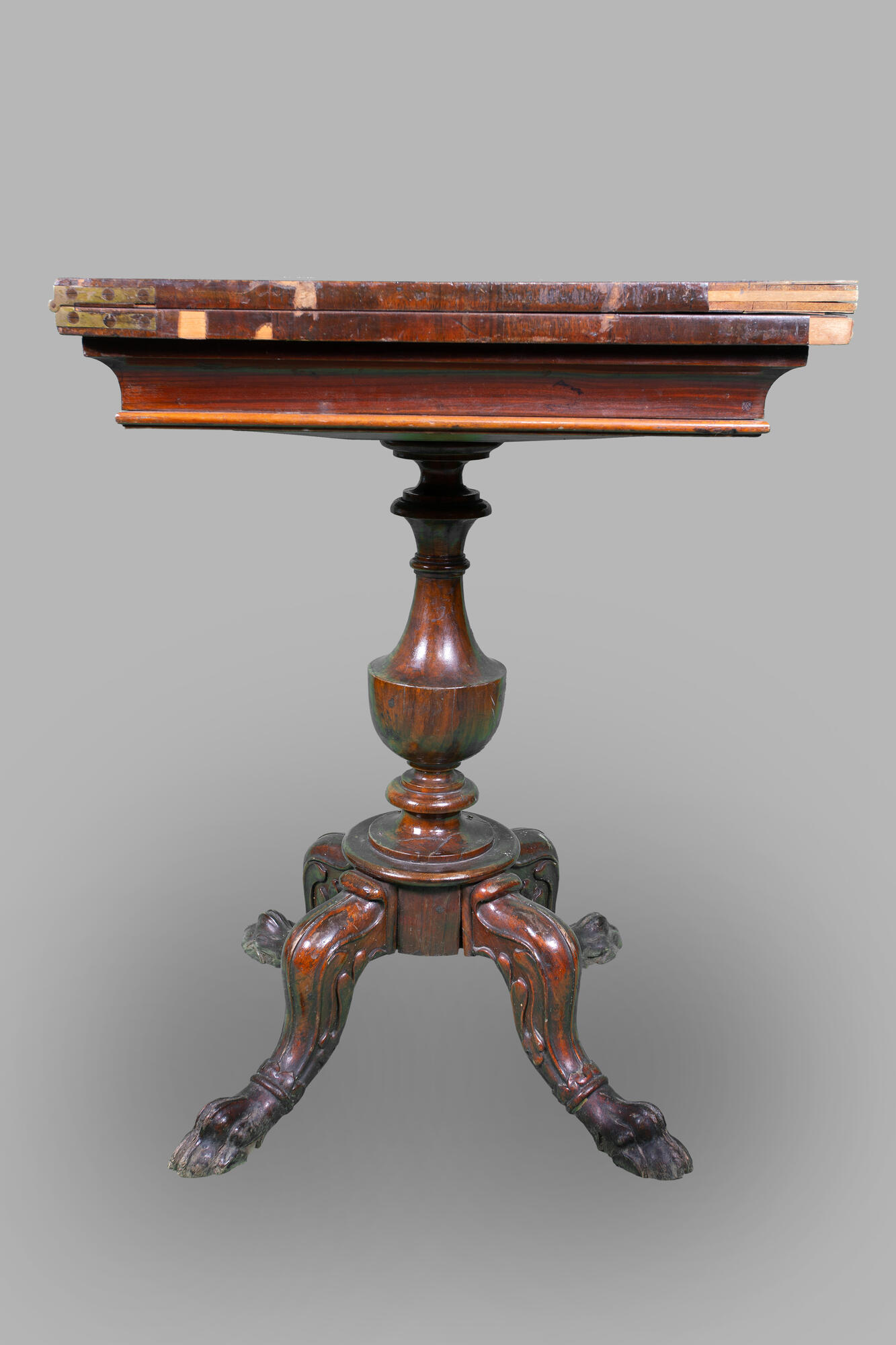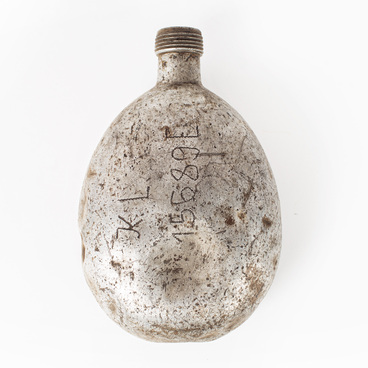The card table got its Russian name — “lomberny” — from the Spanish card game called “l’hombre”, which appeared 500 years ago. In the 16th century, such tables were made in Spain, France and England, and two centuries later the fashion reached the Russian Empire. Card tables appeared in many noble houses — men and women gathered at them in the evenings to play.
The tabletop could be opened and turned. It was upholstered with green cloth so that cards would not slip and it was possible to make notes about the progress of the game with chalk. Chalk and brushes for wiping the surface were stored in the drawers. Russian aristocrats learned about the new card game only in the 18th century, but soon it was replaced with whist and preference. Card tables, however, remained an important attribute of leisure and retained their name even when no one played l’hombre anymore.
Having become a familiar element of the interior, a small card table was used for children’s evening tea parties, and during the day it was a stand for flowers, books and gifts. Card tables with boards for playing chess or backgammon were also called “lomberny” ones. Both ladies and gentlemen were equally fond of gambling, however, card tables were more of a men’s piece of furniture, which they often placed in their offices.
Card tables were used for all salon card games with maximum six players. In the 19th century, cards in Russia became so popular that card tables were placed even in guest rooms at postal stations, in addition to beds.
Alexander Sergeevich Pushkin twice came to the city of Sergach, Nizhny Novgorod Region. Perhaps he wrote the story “The Queen of Spades” at a card table in the autumn of 1833 in his ancestral village of Bolshoe Boldino. The poet Nikolay Nekrasov also often spent time at the card table. He treated gambling rationally, not relying on luck, but applying logic and strategy. Thanks to regular card winnings, Nekrasov returned the village of Greshnevo lost by his ancestors and published the popular Sovremennik magazine.
The tabletop could be opened and turned. It was upholstered with green cloth so that cards would not slip and it was possible to make notes about the progress of the game with chalk. Chalk and brushes for wiping the surface were stored in the drawers. Russian aristocrats learned about the new card game only in the 18th century, but soon it was replaced with whist and preference. Card tables, however, remained an important attribute of leisure and retained their name even when no one played l’hombre anymore.
Having become a familiar element of the interior, a small card table was used for children’s evening tea parties, and during the day it was a stand for flowers, books and gifts. Card tables with boards for playing chess or backgammon were also called “lomberny” ones. Both ladies and gentlemen were equally fond of gambling, however, card tables were more of a men’s piece of furniture, which they often placed in their offices.
Card tables were used for all salon card games with maximum six players. In the 19th century, cards in Russia became so popular that card tables were placed even in guest rooms at postal stations, in addition to beds.
Alexander Sergeevich Pushkin twice came to the city of Sergach, Nizhny Novgorod Region. Perhaps he wrote the story “The Queen of Spades” at a card table in the autumn of 1833 in his ancestral village of Bolshoe Boldino. The poet Nikolay Nekrasov also often spent time at the card table. He treated gambling rationally, not relying on luck, but applying logic and strategy. Thanks to regular card winnings, Nekrasov returned the village of Greshnevo lost by his ancestors and published the popular Sovremennik magazine.



